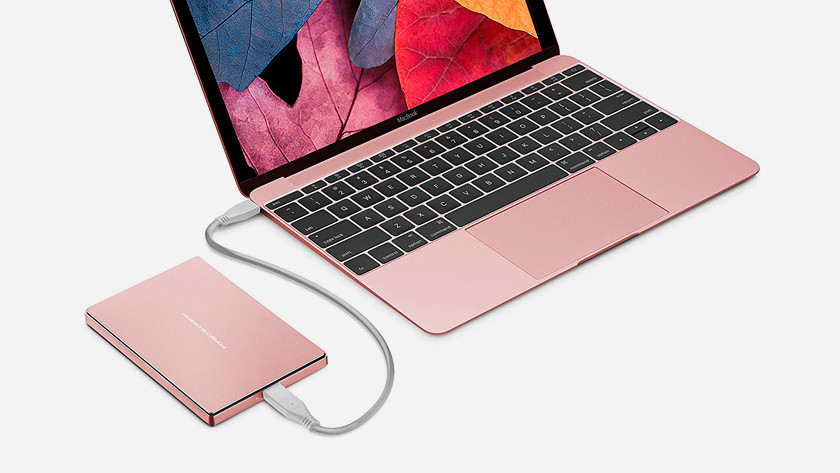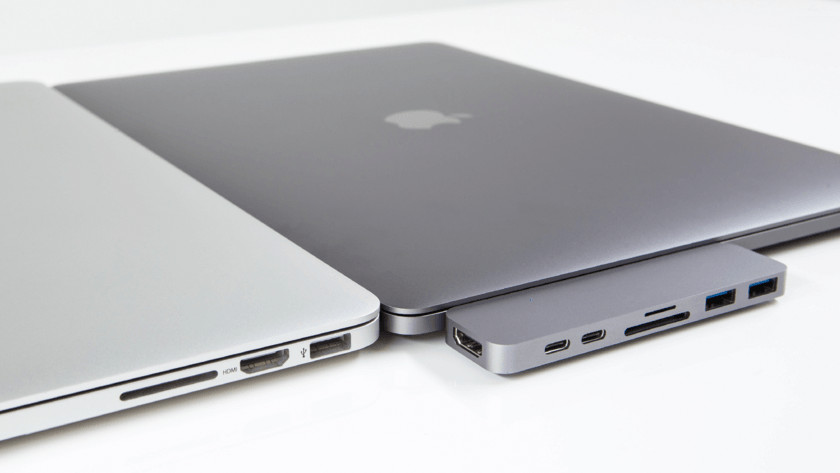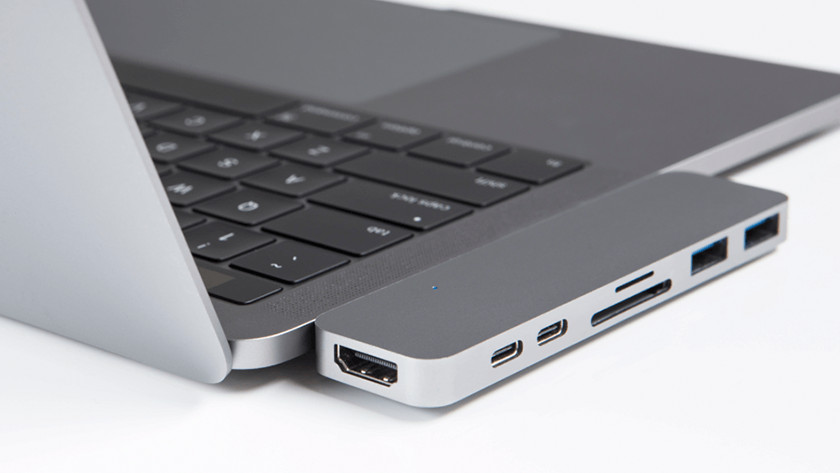The latest generation of the Apple MacBook is equipped with USB-C or Thunderbolt 3 ports. For example, the 13, 15, and 16-inch MacBook Air 2 and MacBook Pro have no fewer than 4 USB-C Thunderbolt 3 ports. What exactly can you do with these Thunderbolt 3 USB-C ports on your MacBook? You can read that in this article.
What is Thunderbolt 3?
Thunderbolt 3 can be found in docking stations, monitors and other devices. The technology is currently only supported via a USB-C port. With a speed of 40 Gb / s, Thunderbolt 3 is up to four times faster than its predecessor Thunderbolt 2. Due to this high transmission speed, a Thunderbolt 3 input offers many possibilities. We list them here for you.
1. Transfer data

Just like a normal USB port, you can use the Thunderbolt 3 port on your MacBook to transfer data to another device. Even files of several gigabytes can be transferred in a matter of seconds. I can even transfer a 4K film within 30 seconds. Transferring data has never been faster with a MacBook than with Thunderbolt 3. Make sure your hard drive also supports Thunderbolt 3.
2. Charge devices

With Thunderbolt 3, the port on your MacBook can be used for charging in two directions. This means that an external device can be charged via the input, but that an external device can also charge my MacBook. And if you want to connect a MacBook to a docking station, you not only have more ports, but your MacBook is also charged.
3. External monitor support

Since Thunderbolt 3 supports speeds of up to 40 Gb / s, additional screens can be connected to enlarge your work area. This way you can connect up to 2 4K monitors to your MacBook, with the refresh rate remaining at 60 Hz. You can edit photos in 4K resolution without picture dropouts. For even sharper images, you also have the option of connecting a 5K monitor.
Adapter

The advantage of Thunderbolt 3 is that the port works not only with USB-C devices, but also with other ports. For example, think of DisplayPort, HDMI or VGA: Everything works via Thunderbolt 3. However, you need a separate adapter to connect your MacBook to one of these ports. This is also the disadvantage of Thunderbolt 3: Although different connections are supported, you need separate adapters to establish a connection.
Conclusion
The USB-C ports on your MacBook support Thunderbolt 3. This means that you can quickly use these ports to transfer data, connect external devices and even charge your Apple MacBook. Unfortunately, many devices do not (yet) have a USB-C input, so a separate adapter is required to connect to the device in question. Fortunately, Thunderbolt 3 supports a wide variety of connection types such as DisplayPort, HDMI and VGA.